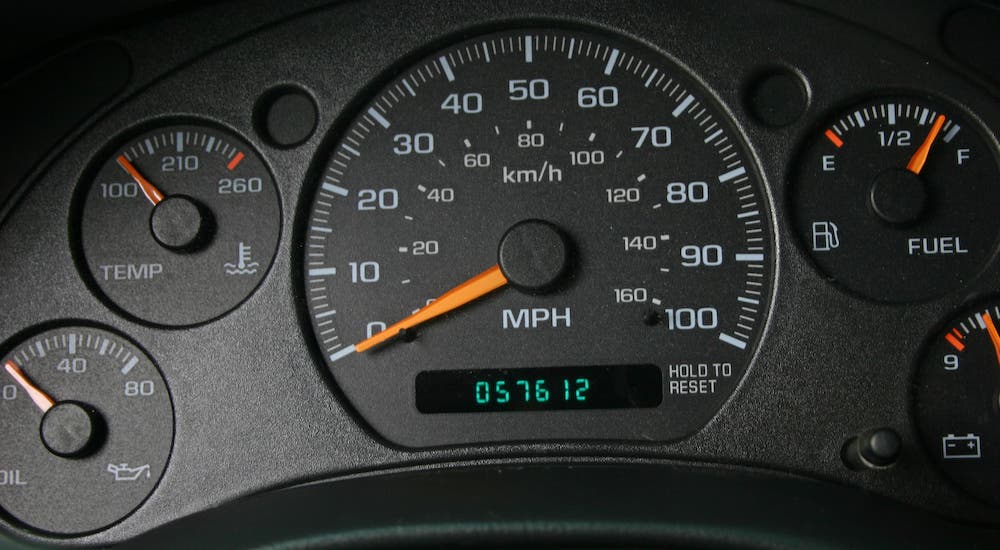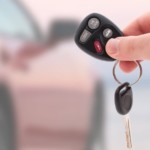It’s no secret that used cars already have miles on them. That’s one of the many reasons why used vehicles are a lot cheaper than new models. However, many people are left wondering what mileage is considered good? Bad? Should cars with a certain number of miles on them automatically be filtered out of your search? These are some of the questions we will answer for you today in this handy guide to used car mileage.
Disproving Myths
Back in the day, folks used to say that a vehicle will not last for 100,000 miles. However, those days are long gone, and it is no longer uncommon to see older vehicles making it well into the 6-figure mileage range. This is especially true for vehicles that have been well maintained. Synthetic oils, specialty fluids, and routine check-ups for fine-tuning any potential issues will help make your vehicle last a lot longer. The antiquated idea that vehicles with over 100,000 miles are bad is simply not true anymore.
What Mileage Is Considered Good or Bad?
While the answer to this question relies on many different factors, a general rule of thumb is to expect 120,000 miles on a vehicle that is ten years old. That is perfectly normal and fine – just think about the math for a moment. Most drivers put about 13,000 miles on their vehicles each year. Some may have more, and others might have less. However, there isn’t really a good or bad number to look out for. There is really only an average number that you can expect.
Is Mileage Important?
When buying a used car, the total number of miles on the odometer is important to a certain extent. However, it should not be the deciding factor in whether or not you purchase the vehicle. Ultimately, the condition of the vehicle should be the decision-maker.
Here’s a good example. Let’s say you are looking at two used sedans: one is ten years old with 120,000 miles on it and a clean vehicle history report, and the other is five years old with 60,000 miles and two accident reports. Which vehicle will you be more tempted to spend money on? You will probably be more inclined to purchase the older model with the perfect record.
While the younger vehicle probably went through repairs to fix any damage, you can never be 100% sure that those repairs will hold or how long the repairs will be last. Was the mechanic who fixed the vehicle certified? Did he or she use OEM parts? These are things that you really don’t want to worry about. So, in this case, the mileage wasn’t as important as the condition.

Tips for Buying a High-Mileage Vehicle
If you are thinking about purchasing a used vehicle with a higher number of miles on it, we have some tips for you. These are meant to help you make the best decision and avoid any potential future problems:
#1 – Go to a dealership
We highly recommend that you look for a high-mileage used vehicle at a dealership instead of with a private seller. Dealing with Craigslist or classified ads can be a grueling experience. The line of communication is often muddled, and you’ll have to do all of your research on your own. Private sellers also typically ask for cash, so there are no payment plan options to help you out.
Meanwhile, a dealership will be able to provide you with a vehicle history report. You can call or email the dealership during daily business hours, and someone will be able to assist you. Furthermore, you can always apply for financing at a dealership.
#2 – Get a vehicle history report
As we touched on briefly before, dealerships should always have a vehicle history report ready to look at with each used model. Certified pre-owned vehicles come with this report, but they never have high mileage, which is why we excluded them from this list. However, if you have your eyes on a specific used vehicle with high mileage and there is no vehicle history report available, ask your sales agent. He or she will be able to quickly gain access to the report for you to look over. Never buy a used vehicle without getting a vehicle history report first.
#3 – Go for a test drive
Even with the vehicle history report, older vehicles are at a higher risk of having excessive wear and tear. Routine maintenance can keep major issues at bay, but we always recommend taking any vehicle you want to buy out for a spin first. A test drive will allow you to listen to the engine, pump the brakes, and get a feel for the vehicle in general. Be sure to drive it around a neighborhood and take it out on the highway just to be sure no surprises are waiting for you. If you hear any weird sounds or detect any strange smells, there may a problem that you don’t want to deal with.

#4 – Bring your own mechanic
So, you’re at the dealership, and you found a vehicle you like. The vehicle history report checked out okay, and the test drive went well. Now what? At this point, you can purchase the vehicle. However, if you still feel a bit wary, you can ask a trusted third-party mechanic to come and take a peek at the vehicle. Dealership cannot prevent you from having an outside mechanic inspect the car.
Your mechanic will be able to tell you how much life is left in the brake pads and when you should expect to change them. He or she can give you plenty of other facts and details about the vehicle so that you don’t end up stranded on the side of the road in a month. If you really want to know if that 120,000-mile vehicle is worth buying, get your mechanic to take a look at it.
#5 – Look at the service history
Our final tip for buying a high-mileage vehicle is to look at the service history. Not every used model will have this available, but the ones that do are already on the right track. If the vehicle you want has its service records available, you should start by checking the dates.
You particularly want to look for any missed oil changes as driving a vehicle that is low on oil can wreak havoc on the engine. If the last few routine maintenance check-ups were missed, that’s a red flag that you should look at another model. However, if the high-mileage vehicle has a good record of services, then you will be able to rest a lot easier knowing that the former owners cared for the vehicle.
Finding a High-Mileage Used Car
Are you ready to purchase a used vehicle? You don’t have to spend the entire day going from dealership to dealership. You can head over to any local dealership in your area to see what’s in stock right now. Some dealerships have their entire inventory listed online. By running a quick Google search, you can find the top-rated dealers in your area and see what they have on their lots before giving them a call to schedule a test drive in the vehicles you like.



